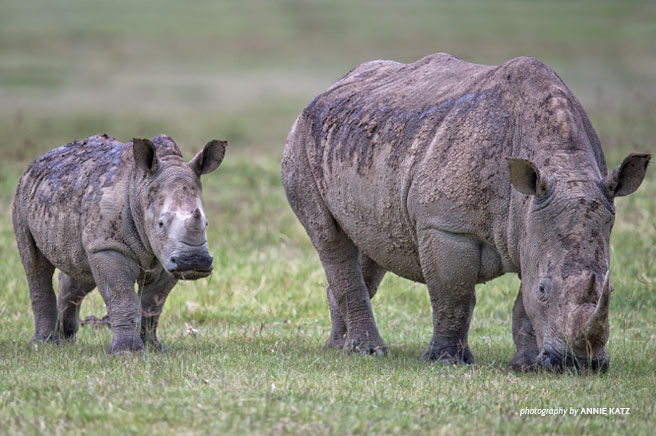Hope Ahead in Fight Against Wildlife Trafficking

Africa is in a crisis that few would have anticipated, at least not the extent to which it is impacting the most visible symbols of conservation, the continent’s iconic species. Not only are current levels of illegal offtake unsustainable, but the species affected are also in much-reduced populations and ranges.
Protecting remaining wildlife populations is thus a priority. (Later, we must recover lost populations and rehabilitate ranges.) In these renewed efforts, African governments and citizens must lead, supported by the international community—not the reverse. Fortunately, there have been increased efforts to this effect. Signaling increased political support, several high-level meetings have been held in the past two years.
In March 2015, a meeting of 32 countries and NGOs took place in Kasane, Botswana. In addition to being hosted by President Ian Khama, the conference attracted a high level of political leadership, including the participation of the president of Gabon, Ali Bongo Ondimba, and the vice presidents of Namibia, Tanzania and Zambia. The two largest consumer countries of illicit ivory and rhino horn, China and Vietnam, also participated and pledged their support to fight the trade.
AWF has contributed to both regional and continental strategies to combat wildlife trafficking.
Increased investment
With priorities having been outlined, now is the time for action, albeit with some domestication in countries and sites. Botswana’s president announced that his government has a zero tolerance policy toward wildlife crime, and he would not entertain corruption in the matter. Though Botswana has wildlife rangers, the country’s defense forces are also involved in wildlife protection.
Kenya has formed a multiagency force to curb poaching, passed a strong wildlife law and increased funding and ranger numbers. Tanzania, which has lost much of its elephant population of the last 30 years, now has an approved wildlife protection strategy.
Finally, several countries, among them Kenya, the United States and China, have destroyed ivory to create awareness and send a clear message against illegal trade. These are encouraging examples, but much more needs to be done.
AWF, for its part, has increased on-site investment to protect species. Thus far, more than 32 priority populations of elephants, rhinoceroses, large carnivores and great apes have received support under our US$10 million Urgent Response Fund. By 2018 we aim to support at least 40 key populations from poaching and more than 10 ports under the anti-trafficking portion of the Fund. AWF’s approach to protecting species is multidisciplinary, incorporating traditional approaches such as training and equipping rangers but also adding modern technologies and approaches to strategically address an ever-evolving threat. In the Ruaha and Selous landscapes in central and southern Tanzania, AWF is working with partners Wildlife Conservation Society and Protected Area Management Support (PAMS) Foundation, respectively, to support on-the-ground and aerial patrols, provide equipment and monitor elephant populations within and outside of protected areas.
At Manyara Ranch Conservancy, AWF is working with Honeyguide Foundation to test what optimal levels of investment in rangers, tracker dogs and technology works best in what eventually will be a center of excellence for anti-poaching in African savannas.
In Kafue, Zambia, we support Game Rangers International and the Zambia Wildlife Authority (ZAWA) to undertake intelligence-led patrols in protecting the local elephant population. Overall, I am optimistic about our chances of shoring up the populations of Africa’s iconic species. Several of the populations we support are either growing or stable, including:
- The rhino populations at Sabi Sand and Hluhluwe Imfolozi in South Africa; Ol Pejeta Ranch and Tsavo West/Ngulia Sanctuary in Kenya; and the Kunene region in Namibia; and
- Elephants in Zambia’s Kafue and Kazungula landscapes.
Matter of time
AWF is investing in anti-trafficking efforts by helping governments to deploy detection dog teams in key ports and by training judges and prosecutors—enhancing detection rates and successful commensurate sentencing of wildlife crime.
To start, AWF is establishing a center of excellence for training detection dogs and their handlers near Arusha, Tanzania. The first team of 13 handlers and eight canines graduated from our training facility in July 2015, and immediately were deployed to Africa’s most notorious ports. They have already successfully apprehended ivory smugglers in Kenya.
The training of judges and prosecutors is taking place through a series of workshops, starting with Kilimanjaro and Samburu landscapes; Mombasa and Nairobi, Kenya; and Kinshasa, Democratic Republic of the Congo. Topics covered in these trainings include wildlife and its value, legislations, enforcement best practices, prosecutor-guided wildlife crime investigations, chain of custody, multi-agency dialogue and collaborations. AWF recently hired a manager of wildlife law enforcement who will liaise with the various agencies as we expand our support to other countries.
AWF is also running awareness campaigns in key consumer countries in Asia—as well as in Africa. The Asia campaign, now going on more than three years, has successfully raised awareness of Asian consumers about the tragic consequences of their demand for ivory, rhino horn and other wildlife products.
According to a survey conducted in China in 2014, 95 per cent of respondents believe the Chinese government should impose a ban on the ivory trade. The Chinese government appears to have taken a few steps in that direction, first with a limited ban in ivory imports in and then with a joint announcement, in September 2015, from President Xi Jinping and US President Barack Obama that committed the two countries to taking significant and timely steps to halt the domestic commercial trade of ivory.
With concerted efforts, it is a matter of time before we avert the poaching crisis and restore wildlife populations. AWF’s goal: to conserve viable and functional populations of Africa’s wildlife species embedded in their natural landscapes.